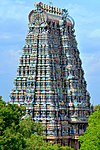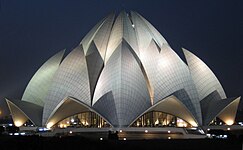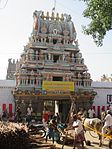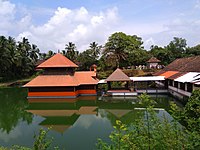Padaratha
Republic of Padaratha 西輅民國 | |
|---|---|
| Motto: "Oka prajalu, oka vidhi" (Tamisari) One People, One Destiny | |
| Anthem: "Maha Prasthanam" "The Great Journey to a New World" | |
 Padaratha (dark blue) located within Coius (light blue). | |
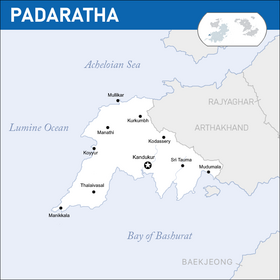 Location of Padaratha | |
| Capital and largest city | Kandukur |
| Official languages | Estmerish Tamisari |
| Recognised national languages | Pumil Valarna Chatra Sahaput |
| Ethnic groups (2020) | |
| Religion (2020) | |
| Demonym(s) | Padarathan |
| Government | Federal parliamentary constitutional republic |
| Hiriya Prasanna | |
• Premier | Gaurav Mahamuni |
| Legislature | Samakhya Samavesam |
| Senet | |
| Sahayakula Illu | |
| Independence from Estmere | |
| 1 November 1946 | |
| 18 May 1962 | |
| Area | |
• Total | 412,196 km2 (159,150 sq mi) |
| Population | |
• 2020 estimate | |
• 2013 census | 95,883,247 |
| GDP (PPP) | 2020 estimate |
• Total | |
• Per capita | |
| GDP (nominal) | 2020 estimate |
• Total | |
• Per capita | |
| Gini | 31.5 medium |
| HDI | medium |
| Currency | Padarathan pagoda (ಪ್) (PDP) |
| Driving side | right |
| Calling code | +86 |
| Internet TLD | .pd |
Padaratha, officially the Republic of Padaratha, is a country in Satria. It borders Nirala to its east, and shares maritime borders with Ansan and Senria. It also shares a maritime border with Mahtala, part of which has been occupied by Nirala since 1968. Padaratha has a population of 101 million, of which 8.5 million live in the capital of Kandukur.
The first humans arrived in Satria around 55,000 years ago, with the Barayan Site revealing that they had settled in modern Padaratha by 47,000 BCE. By the 4th or 3rd millenium BCE Proto-Tankari had spread to Padaratha, and was likely the most widespread indigineous language in Satria. After the 2nd millenium BCE Proto-Satro-Pardarian began arriving from the east, and by 1200 BCE Parbhan had largely begun to supplant Tamisari in the east. This process would continue until the modern-day, gradually pushing the Tankaric languages further west.
From 3500 BCE to 1000 BCE the area was home to the Vistra and Narpra cultures, which coincided with the legendary Puliraj, Jalariraj, and semi-legendary Puranagar dynasties. -More ancient Satrian stuff here-
-Medieval Satrian stuff here-
Etymology
The etymology of the name Padaratha means "Western Chariot", and refers to the title of the same name. It comes from the Tamisari పడమర Paḍamara "West", and రథం Rathaṁ "Chariot", itself from the Parbhan रथ rátha. The Swaraj movement coined the term for the majority-Tankari region of Satria under Estmerish rule.
Under Estmerish rule, Padaratha was commonly known as Canducca, after the Canducca Presidency. The Canducca Presidency was the largest of three Presidencies, until they were merged in 1912 into Estmerish Satria.
History
Classical
The area of modern-day Padaratha has been inhabited by the Tankari peoples since x BCE. The Tankari peoples, along with other groups indigenous to Satria, are believed to have occupied most of Satria before the !Indo-Aryan migrations into the area. These migrations, starting around x BCE, gradually diminished the Tankari and mleccha (a term for non-!Indo-Aryan peoples of unknown linguistic origin) presence in most of Satria, rendering them a minority in most of Satria bar the western peninsula.
There was intensive syncretism and mixing between the Tankari and Parbhan groups, resulting in a large amount of shared religious beliefs, deities, rituals, and cults, as well as great linguistic borrowing between the two language families. It should be noted that the idea of separate Tankari and Parbhan groups only began to develop in the 19th century, largely spurred on by Euclean attempts to classifying the Satrian peoples. Before this identification was mainly based on clan, polity, caste, or language.
Less is known of early Tankari polities in modern-day Padaratha than their contemporaries in the Bashurat basin, which flourished as the centre of Satria due to the intensive agricultural output allowed from the Bashurat river and delta. The x era saw its centre in the Bashurat basin, though the polity of y in modern !Telugu-state exerted much influence from the periphery. Most of its records are known from the state of z, which had a number of dealings with it, and the absence of records after x BCE indicate that it either declined in importance, was overcome by another polity in the area which interacted less with the Bashurat basin, or suffered a dramatic collapse.
Control of the region became largely shared between the Pakala, 2, and 3 dynasties, the ‘Three Crowned Clans’ which consisted of extensive clans ruling fluid polities bound by familial ties. These dynasties were overlaid across a patchwork of tributary and vassal kingdoms and cities, and jostled for dominance of the region, with the 2 enjoying a long period of dominance from x AD to y AD. This system was briefly interrupted by the extension of Sangma rule into the area in 454 AD under Rama II of the Middle Sangma, though the Sangma soon retreated from direct governance of most of the peninsula and instead exerted control through several strategic garrisons and relying upon trusted vassals.
The reduction in presence in the region of the Middle Sangma dynasty from the region allowed for the rise of the city of Tauma. Tauma was uniquely republican and during the 7th and 8th centuries dramatically expanded to cover large parts of Satria. Its attempts to control the Bashurat basin and end the ailing Middle Sangma resulted in its exhaustion, allowing the Jhanda Empire and the High Sangma dynasty to reduce it to western Satria. It would continue being a dominant power until the 10th century when its control of the region waned, and its empire receded.
Medieval and Early Modern
During the medieval period the political system returned to the three dynasties, though from the 11 th to the 13 th centuries the x dynasty controlled much of the !Kannada state, and the 14th century saw the pseudo- Pakalas briefly rule place. The peninsula would remain divided, only occasionally coming under the hegemony of one state, for most of the era until the arrival of the Togoti in the 17th century.
The most significant development was the conversion of the area to Zohism. Zohism had arrived initially in the 3 rd to 1 st centuries BCE by Shangeans fleeing persecution by the Xiang dynasty, though it was largely concentrated in the Bashurat basin and failed to spread its influence further. Its second arrival began in the 11 th century, when Senrian monks of the Kuoeci school arrived to proselytise, taking advantage of existing extensive trade links between Satria and Senria. The Kuoeci school’s tolerance and integration of the Tankari folk religion aided greatly in its spread, and its adoption by Ivangi person of place in x AD is considered the start of Zohism’s rise in Padaratha.
The arrival of the Togoti in the 17th century dramatically changed Satria’s political situation, with the consolidation of the successor states of the Late Sangma into the Togoti Khaghanate over the . While the Togoti’s direct influence was more felt in eastern Satria, through several invasions they were able to exact tribute and establish vassals in the area. A daughter of the Gurkhan, Baikijan, married into the Pakala dynasty and ruled the y kingdom from x to z as a queen regnant. The Togoti Khanate collapsed in the mid-17th century due to a combination of internal strife and exhaustion from extensive campaigning in Satria, Ansan, and Shangea. This allowed the Pakala dynasty to assert itself as the hegemon of western Satria, establishing a naval dominance assisted by its extensive patronage of the Navipati. It would begin to decline in the late 18th century as Euclean interference, predominantly Estmerish and Etrurian, weakened its control over trade.
Estmere would begin its conquest of the area after setting up factories in x, y, and z in year, year, and year respectively. It would gradually bring smaller polities under its control by restricting their trade and installing residents to control their rulers. Areas which resisted came under direct control, resulting in a mixture of nominally allied princely states and regions controlled directly by Estmere. The Pakalas surrendered in year after the disastrous Battle of x, and the conquest of the region concluded in 18xx with the surrender of Raja name of place.
Modern
The Estmerish initially divided Padaratha into three presidencies, Canucca, y, and z, before uniting them in 18xx into Estmerish Satria. Before it was unified control was split between three presidents, while after power was centralised in the viceroy, who was aided by a council appointed by the Estmerish government, and after 19xx by a council composed of native princes and those chosen by the viceroy. A unified civil service was established in 18xx, and after 18xx native Padarathans were allowed to join albeit in junior roles. During the Great War the region remained relatively peaceful, only seeing a few naval engagements off its shores due to Gaullica’s control of nearby Ansan. Units raised from Padaratha saw action in the rest of Satria, as well as in Zorasan, Euclea, and in Senria after 1931. The collapse of Estmere in the war, and its transformation into a republic post-war, increased calls for independence. The Swaraj movement, uniting a number of parties most prominently the x, shifted between collaborating with the Estmerish, and calling for strikes and protests when demands for further self-governance were not met or were delayed. After the Promise of 19xx, Estmerish Satria achieved independence in 19xx as the Republic of Padaratha.
Unlike its contemporaries in Etrurian Satria, who endured a tumultuous war for independence and struggle to
establish themselves as states following the collapse of the Etrurian empire after the Solarian War in 1956,
Padaratha enjoyed a period of stability. The establishment of the pan-Satrian and communist state of
Arthasthan on its border created a red scare in the nation, which led to panics in 19xx and 19xx, both of which
resulted in anti-communist actions both at a popular and institutional level. The Panic of 19xx combined with
Arthasthan’s invasion of Minkathala and subsequent war with Padaratha led to the establishment of an anti-
communist military junta. The military junta lasted near a decade before protests over a declining economy
and lack of political freedoms restored parliamentary democracy.
Since 198x Padaratha has been a parliamentary democracy, with increases in its political and civil rights each year. In 2011 the ban on communist parties was lifted, although any affiliations or links with Arthasthani organisations remains prohibited and it has been reported that the state actively monitors all left-wing parties for signs of disloyalty or pan-Satrian ideology. It maintains positive relations with most of its neighbours, including Ajahadya after the 1985 cityname Conference, though it considers Arthasthan a hostile state and, like most of the world, does not recognise the Arthasthani supported communist minkathala state here, instead supporting and recognising the Tankari Republic of Minkathala.
Geography
Climate
Biodiversity
Politics and government
Politics
Government
Administrative divisions
Legal system
Military
Foreign relations
Human rights and corruption
Economy
Industries
Socio-economic challenges
Demographics
Religion in Padaratha as of 2020.
Urban centres
Language
Religion
Padratha's constitution guarantees freedom of religion, and establishes Padaratha as a secular state. The country is religiously diverse, with Zohism being the largest religion, followed by 80 percent of the population. The majority of Padarathan Zohists follow the Kuoeci school, followed by minorities of followers of the Dengoq and Tsandau schools. Padaratha has the second largest Zohist population in the world, and the largest in Satria. Zohism first arrived in the 3rd century BCE, from dissidents fleeing Xiang persecution, but it did not begin to spread until after the 8th century CE when merchants and clergy from Senria arrived. -Some more non-history stuff here-
-Ashram-
Sotirianity
-Badi, Tulyata, and other-
Jalandukur Temple, an Ashram Temple in Jalandukur
Ambedesar Lake Temple, a Badi Temple in Ambedesar




